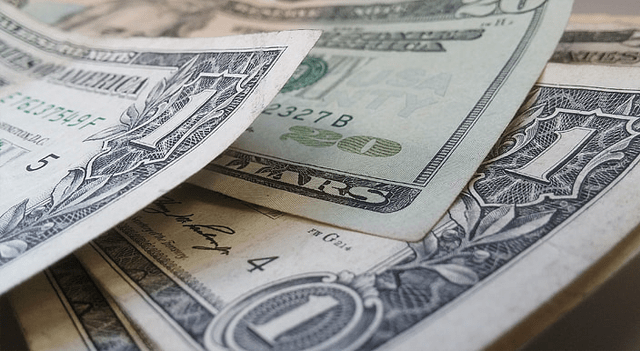The U.S. dollar firmed slightly on Tuesday, stabilizing after suffering losses triggered by a weaker-than-expected jobs report. Investors are now focusing on the potential for multiple interest rate cuts by the Federal Reserve as signs of a slowing U.S. economy grow.
By 04:15 ET (08:15 GMT), the Dollar Index, which tracks the greenback against a basket of six key currencies, inched up 0.2% to 98.765. This came after the index touched its lowest level in a week earlier in the session.
Market Eyes Fed Moves After Payroll Miss
The dollar has been under pressure since Friday, when July’s employment numbers fell short of expectations. The data prompted traders to quickly factor in the likelihood of monetary easing as early as September.
According to CME’s FedWatch tool, market participants now see more than a 90% chance of a rate cut next month, up from 63% one week prior.
Goldman Sachs analysts forecast that the central bank will begin cutting rates in September, starting a three-meeting sequence of 25-basis-point reductions. They also noted that “a 50 basis point move [is] possible if the unemployment rate climbs further in the next report.”
Echoing that tone, San Francisco Fed President Mary Daly said on Monday that recent labor market indicators and the absence of lasting inflation tied to tariffs suggest more policy easing may be needed. “Given mounting evidence the U.S. jobs market is softening and no signs of persistent tariff-driven inflation, the risks are now skewed to more than two Fed cuts this year,” she said.
The next key data point for the U.S. economy is the ISM services index for July. Analysts at ING noted, “For today, the U.S. focus is on the ISM services figure for July. A mild improvement is expected and could give the dollar a nudge higher.”
Uncertainty over international trade remains a key macro theme after President Trump announced sweeping new tariffs on a wide range of imports last week, raising concerns about the global economic outlook.
Euro Slides on Weak French Services Activity
The euro lost ground Tuesday, with EUR/USD slipping 0.3% to 1.1544. Investors reacted to disappointing services data out of France, which pointed to a faster pace of economic contraction in the sector.
The HCOB France Services PMI dropped to 48.5 in July from 49.6 in June—its steepest monthly decline since April—as ongoing political instability and weak consumer demand hurt confidence.
Later in the day, the eurozone’s producer price index for June is expected to show a modest 0.6% annual increase. If confirmed, the muted inflation figure could reinforce expectations that the European Central Bank will remain cautious.
“EUR/USD looks quite comfortable near the 1.1550 level and, in the absence of market drivers, may hang around that level for a while. We imagine buyers would return in the 1.1500/1520 area should the U.S. data weigh on EUR/USD today,” said ING.
Sterling also edged lower, with GBP/USD falling 0.1% to 1.3277 as it continued to trade within a narrow range.
Rupee Weakens on Tariff Threats
In Asia, USD/JPY gained 0.1% to reach 147.25, buoyed by favorable services PMI data from Japan. The Australian dollar rose slightly, with AUD/USD up 0.1% at 0.6468, while the yuan weakened marginally—USD/CNY climbed 0.1% to 7.1856—even as China posted stronger-than-expected services growth.
The Indian rupee faced steep losses, hitting a record low as USD/INR advanced 0.2% to 87.800. The move followed threats from President Trump to impose higher tariffs on India for continuing to import Russian oil.
The White House had already levied 25% tariffs on Indian goods last week, with Trump warning of further penalties to come.
This content is for informational purposes only and does not constitute financial, investment, or other professional advice. It should not be considered a recommendation to buy or sell any securities or financial instruments. All investments involve risk, including the potential loss of principal. Past performance is not indicative of future results. You should conduct your own research and consult with a qualified financial advisor before making any investment decisions.
